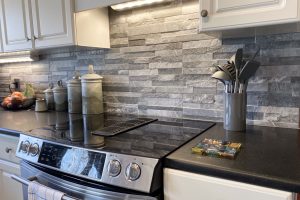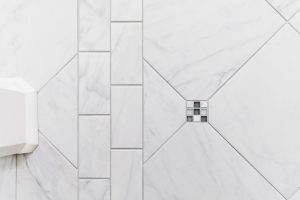First found in Egypt 3,500 years ago, then traveling to Greece and India, the use of glass tiles are an architectural wonder. Installations began as intricate mosaics, some of which still stand today and provide historical insight into these ancient cultures. Using pieces of glass in an array of colors, artists created intricate designs and pictures on walls, ceilings, and floors of these incredible buildings around the world. At the time, glass tile was considered a semi-precious material and was acquired only by elite groups. But it has come a long way since then. Modern-day manufacturing has simplified its production, making it now a popular choice
for homeowners everywhere.
Selections
Variety is the name of the game here. There are so many size, color, and shape options available for glass tile that it can make the choice
overwhelming. Clear glass tile in number of different sizes is translucent, revealing what is behind the tile, but there is a frosted glass variety as well. Bubble glass tiles are made by adding small air bubbles in the glass during production, resulting in a nice textured look. Glass tile mosaics come on sheets now, making installation a lot easier than in ancient Egypt. And all these glass options come in a rainbow of colors.
Its Uses
In the home, glass tile is most often found in kitchens and bathrooms. As a backsplash, it will catch and reflect the light in a kitchen, making it the statement piece of the room. Some glass tiles—the ones fired at a lower temperature—can be highly prone to chipping, but on a surface such as a backsplash, this is rarely a concern. And if spaghetti sauce splatters on a glass backsplash? No concern, it will wipe clean with a wet cloth and leave no staining. For the bathroom, glass tile can add character and elegance to a shower. It is also hygienic, as it inhibits growth of mold, mildew and bacteria. Cleaning is a breeze since most bathroom cleaning products will work on glass tile as well. The only consideration here is to make sure the cleaner used is suitable for the grout as well. Because of concerns with slippage, scratching, and chipping of the tiles, most glass tile is not made for shower floors or other floor applications. There are glass tiles made for floor use—some made of recycled glass—but checking with a reputable installer or supplier before ordering is recommended.
Consideration
Working with glass is not like working with porcelain or ceramic tile. Glass is fragile; it takes care and experience to install. Cutting it,
particularly precision cuts, can be challenging, and they are more prone to breaking than ceramics. Getting the substrate right, or what is under the tile, is very important as well. Improper installation could lead to cracking.
It may not be the intricacy found in an ancient temple, but adding glass tile to a home, whether it be kitchen or bath, can deliver an unmatched, timeless elegance.



